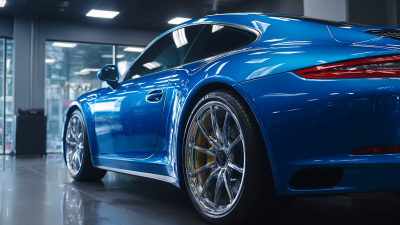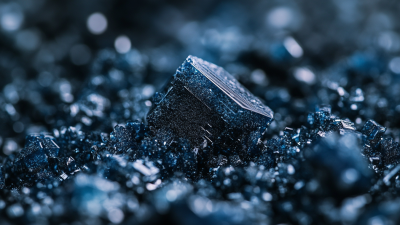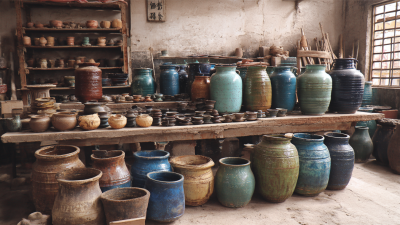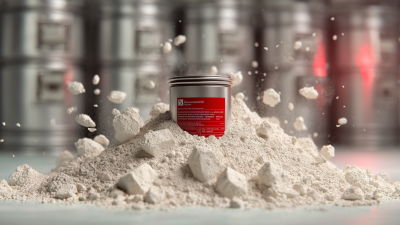In the realm of automotive applications, ensuring optimal durability and performance is paramount for both manufacturers and consumers alike. One of the most effective ways to achieve these goals is through the use of Aluminium Ceramic Coating. This innovative technology not only enhances the aesthetic appeal of vehicles but also significantly improves their longevity and resistance to various environmental factors. As the automotive industry continues to evolve, understanding how to select the best Aluminium Ceramic Coating becomes increasingly important.
As we delve into the 2025 landscape of automotive coatings, we will explore the top five Aluminium Ceramic Coating options available on the market. This comprehensive guide will equip you with the necessary knowledge to make informed decisions, taking into account factors such as chemical resistance, thermal stability, and application methods. By choosing the right Aluminium Ceramic Coating, automotive enthusiasts and professionals can ensure that their vehicles not only look great but also withstand the test of time, performance demands, and harsher driving conditions.

When selecting aluminium ceramic coatings for vehicles, several key factors must be considered to ensure optimal durability and performance. First and foremost, the thermal resistance of the coating is crucial, as automotive components can withstand extreme temperatures. A high-quality ceramic coating should maintain integrity and resist thermal degradation, which directly influences the longevity of the vehicle’s parts.

Another important consideration is the adhesion properties of the coating. A superior ceramic coat should bond effectively with the aluminium surface to prevent peeling or chipping over time. Additionally, one should assess the coating's chemical resistance, particularly against automotive fluids and environmental contaminants. This resistance not only protects the underlying material but also helps maintain the vehicle’s aesthetic appeal. Evaluating these factors can significantly impact the overall performance and durability of the aluminium ceramic coatings in automotive applications.
Aluminium ceramic coatings are increasingly recognized for their benefits in automotive applications, enhancing both performance and durability. One significant advantage is their ability to withstand extreme temperatures, which is crucial for engine components. With the aluminium fluoride (AlF3) market projected to reach $3.12 billion by 2030, it highlights the growing recognition of advanced materials in automotive engineering. These coatings provide a thermal barrier that protects components from wear and tear, ultimately extending their lifespan and reducing maintenance costs.
Another notable benefit is the enhanced corrosion resistance offered by aluminium ceramic coatings. The automotive industry faces challenges from environmental factors, including moisture and chemical exposure. A quality ceramic coating can significantly mitigate these effects, leading to lower repair expenses and improved vehicle longevity. Furthermore, as efficiency becomes a key focus, these coatings contribute to reduced friction and improved fuel economy, aligning with industry trends toward sustainable practices. The adaptability of aluminium ceramic coatings makes them an essential consideration for those seeking optimal performance in automotive applications.
When evaluating ceramic coatings for durability in automotive applications, several key performance metrics should be closely examined. First and foremost, the hardness of the coating is crucial, as it reflects its resistance to scratches and abrasions. Coatings with higher hardness values, often measured on the Mohs scale, provide better protection against the wear and tear that vehicles encounter in daily use. Additionally, adhesion strength is vital; a coating that bonds effectively to the substrate ensures longevity and minimizes the risk of delamination, which can compromise performance over time.

Another important metric is thermal stability. Automotive components often experience extreme temperature fluctuations, so a durable ceramic coating must maintain its properties even under such conditions. The thermal cycling resistance of a coating can be tested to determine how well it performs when subjected to rapid temperature changes. Furthermore, evaluating chemical resistance is essential, as automotive surfaces are frequently exposed to harsh chemicals such as oil, fuel, and road salt. A high-quality ceramic coating should demonstrate excellent resistance to these substances to maintain its integrity and appearance over an extended period. By focusing on these performance metrics, one can make a more informed decision when selecting an aluminum ceramic coating that offers optimal durability and performance.
When selecting the best aluminum ceramic coating for automotive applications, a comparative analysis of leading brands is essential to ensure optimal durability and performance. Various brands offer different formulations that can significantly affect the coating's resistance to wear, temperature fluctuations, and corrosion. It is crucial to evaluate product specifications, user reviews, and performance metrics across the top brands to identify which one aligns best with specific automotive needs.
Recent market trends indicate a growing demand for durable and high-performance coatings, driven by the overall expansion in related industries. For instance, the kaolin market is anticipated to reach approximately USD 8.27 billion by 2030, reflecting an increased interest in materials that enhance product longevity. Similarly, the cookware market's growth to USD 25.6 billion by 2025, and USD 37.5 billion by 2035, signals a broader consumer trend towards high-performance materials. This context underscores the importance of selecting the right aluminum ceramic coating by carefully comparing brands, as their innovations in formulation will play a pivotal role in meeting the demands of performance-driven automotive applications.
When applying aluminium ceramic coatings, proper surface preparation is crucial for achieving optimal adhesion and durability. Start by thoroughly cleaning the surface to remove all contaminants such as grease, dirt, and rust. This can be accomplished using solvents or specialized cleaning agents. Following the cleaning process, it is essential to sand or abrade the surface lightly to create a profile for better coating attachment. Make sure to inspect for any imperfections and repair them before proceeding, as this will ensure a smooth and even application.
Once the surface is prepared, application techniques play a significant role in the performance of the coating. Use a spray gun for even application, ensuring that multiple thin layers are applied rather than a single thick layer. This method helps reduce the risk of runs and ensures uniform coverage. After application, allow adequate curing time as specified by the manufacturer's guidelines to ensure the coating fully bonds and achieves its desired properties. For maintenance, periodic inspections are recommended to check for wear and damage, and any touch-ups should be done promptly to maintain the integrity of the coating.






